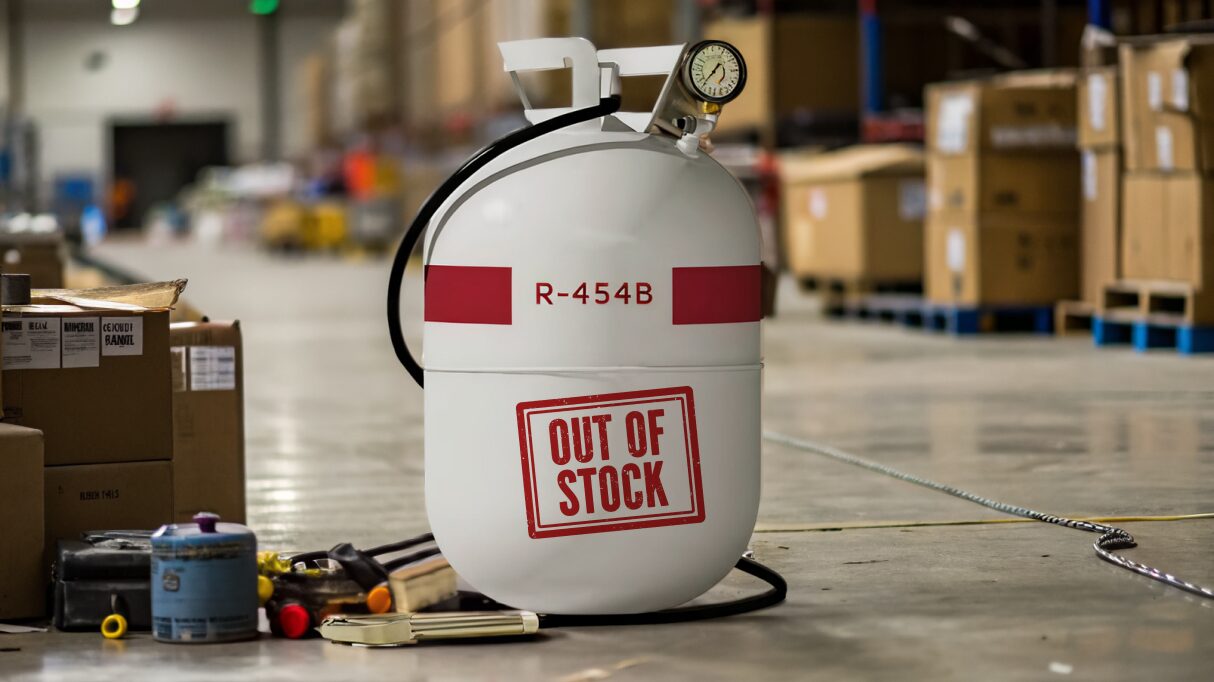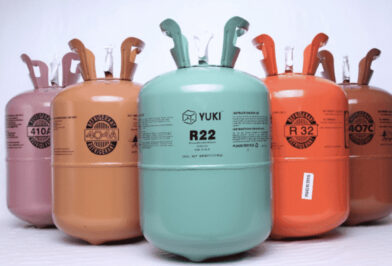If you’re in the HVAC world, chances are you’ve had at least one job in the last few months derailed by the R-454B refrigerant shortage. Whether you’re a contractor waiting on a shipment, a distributor juggling angry phone calls, or a customer having nightmares about sweating it out in July, this one’s hitting hard, everywhere.
So what’s really going on? And more importantly, what can be done about it?
What Is R-454B, and Why Is Everyone Freaking Out?
R-454B is the low-GWP (Global Warming Potential) refrigerant that’s replaced R-410A in most new systems, thanks to federal regulations that kicked in on January 1, 2025.
In theory, this switch is great for the planet. However, putting it into practice has turned into a logistical nightmare.
Scenario 1: Calling 38 Suppliers in One Day
📍 Dallas, Texas
One HVAC contractor reported having a tech spend the entire day calling 38 different suppliers just to locate a couple of cylinders of R-454B. The catch? The supplier would only sell them the refrigerant if they bought a full system too. Not exactly helpful when you’re mid-install with a customer breathing down your neck.
This is the new reality: even big, well-connected shops are scrambling just to find enough product to stay on schedule.
Scenario 2: Problematic Delays
📍Arizona and Alabama
With triple-digit temperatures looming, contractors in Arizona are experiencing installation delays, but it isn’t because of the refrigerant itself. It’s due to a shortage of the specialized cylinders required for storing and transporting R-454B, which is slowing down new system installations and replacements across the state.
A similar situation has been echoed by Alabama contractors. While new equipment shipments remain steady, techs are finding it tough to get small retail canisters needed for repairs and maintenance on existing systems, causing challenges in the field.
Scenario 3: Aftermarket Supply Is Lagging and Price Hikes are Inevitable
📍 Nationwide
OEMs like Lennox, Carrier, and Trane have mantioned that the transition to R-454B iwent smoothly on the production side. Lennox reported nearly 50% of its Q1 equipment sales were R-454B units, and Trane is now shipping 100% of its residential systems with the new refrigerant.
But aftermarket service canisters are still hard to come by and getting more expensive. Some suppliers are charging $700 to $2,000 per cylinder, and major manufacturers have added surcharges and price hikes as high as 42% per order. Even when bulk supply is available, smaller cylinders aren’t reaching contractors fast enough.
So while OEMs stay on track, field techs are facing delays, higher costs, and fewer options for routine repairs.
So What Can Contractors Do Right Now?
- Get Ahead of It: Forecast jobs that require R-454B and place orders early, even if you don’t need them yet.
- Have the Conversation: Be upfront with customers about potential delays or cost impacts.
- Know Your Options: Some companies are switching to alternatives like R-32 (though that can come with its own challenges, such as training, compatibility, etc.).
- Don’t Cut Corners: Tempting as it is, using the wrong refrigerant to “get the job done” could create liability issues and system failures.



